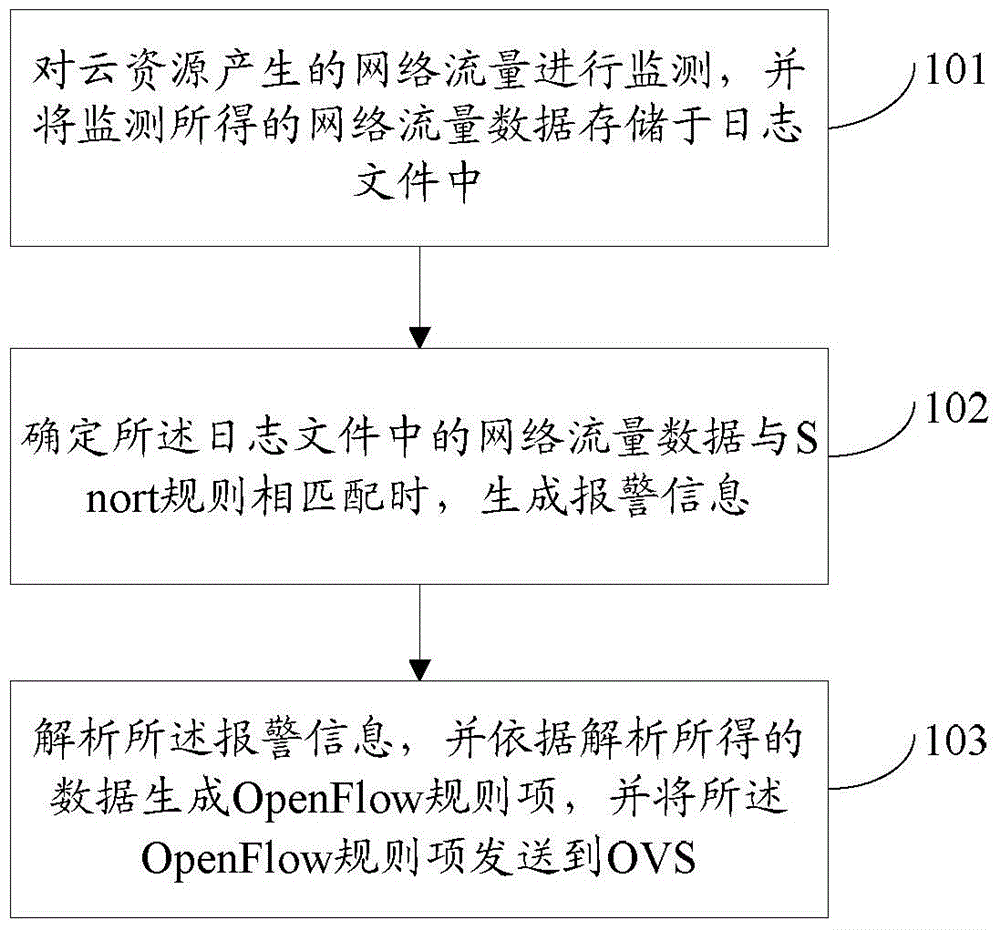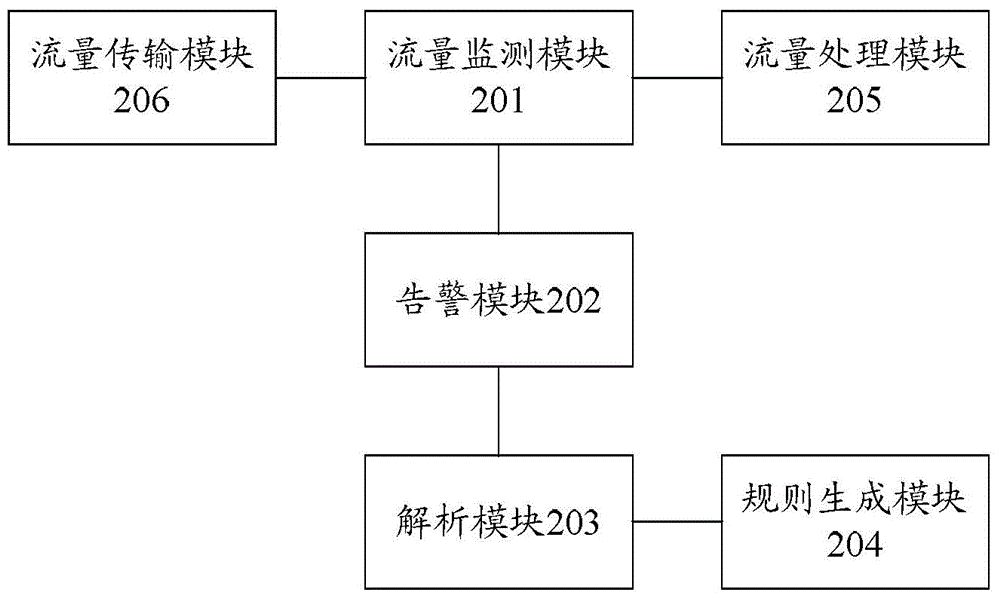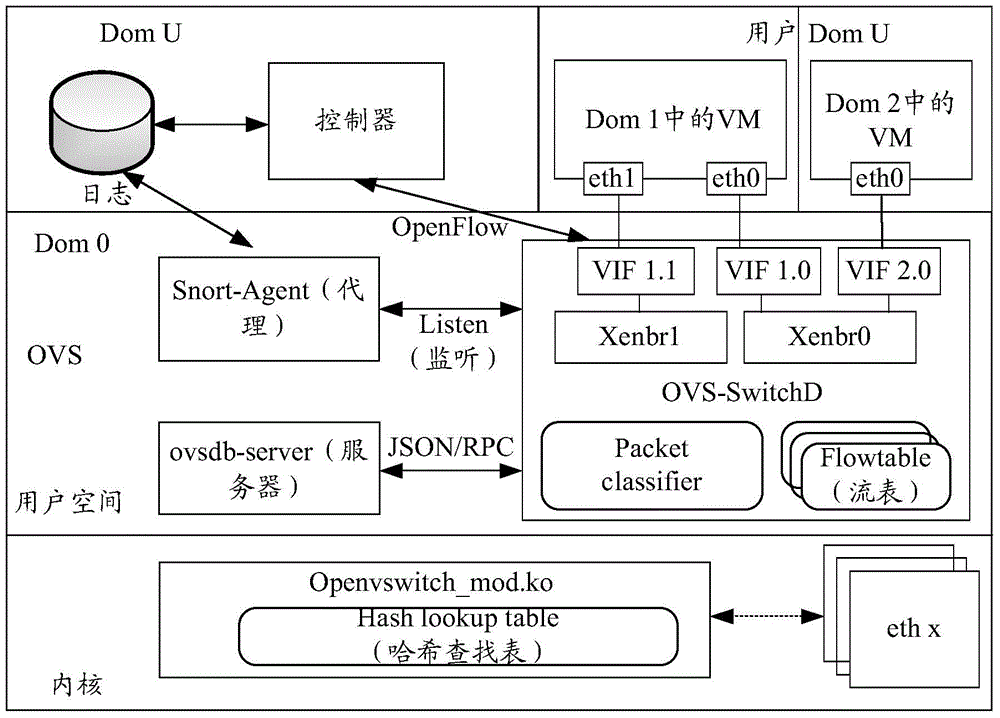Intrusion prevention method applied to cloud virtual network, device, network device and system
A virtual network, intrusion prevention technology, applied in the field of network security, can solve the problems of traffic management, inability to mitigate intrusion, inability to provide intrusion solutions, etc., to achieve the effect of dynamic defense
- Summary
- Abstract
- Description
- Claims
- Application Information
AI Technical Summary
Problems solved by technology
Method used
Image
Examples
Embodiment Construction
[0032] In an embodiment of the present invention, the network flow generated by cloud resources is monitored, and the network flow data obtained by monitoring is stored in a log file; when it is determined that the network flow data in the log file matches the Snort rule, an alarm is generated information; analyze the alarm information, generate an OpenFlow rule item according to the analyzed data, and send the OpenFlow rule item to OVS; the OpenFlow rule item is used for OVS to update the flow table.
[0033] The present invention will be described in further detail below in conjunction with the accompanying drawings and specific embodiments.
[0034] figure 1 A flow chart is implemented for the intrusion prevention method in the cloud virtual network described in the embodiment of the present invention, such as figure 1 As shown, the method includes:
[0035] Step 101: Monitor the network traffic generated by cloud resources, and store the monitored network traffic data in...
PUM
 Login to View More
Login to View More Abstract
Description
Claims
Application Information
 Login to View More
Login to View More - R&D
- Intellectual Property
- Life Sciences
- Materials
- Tech Scout
- Unparalleled Data Quality
- Higher Quality Content
- 60% Fewer Hallucinations
Browse by: Latest US Patents, China's latest patents, Technical Efficacy Thesaurus, Application Domain, Technology Topic, Popular Technical Reports.
© 2025 PatSnap. All rights reserved.Legal|Privacy policy|Modern Slavery Act Transparency Statement|Sitemap|About US| Contact US: help@patsnap.com



